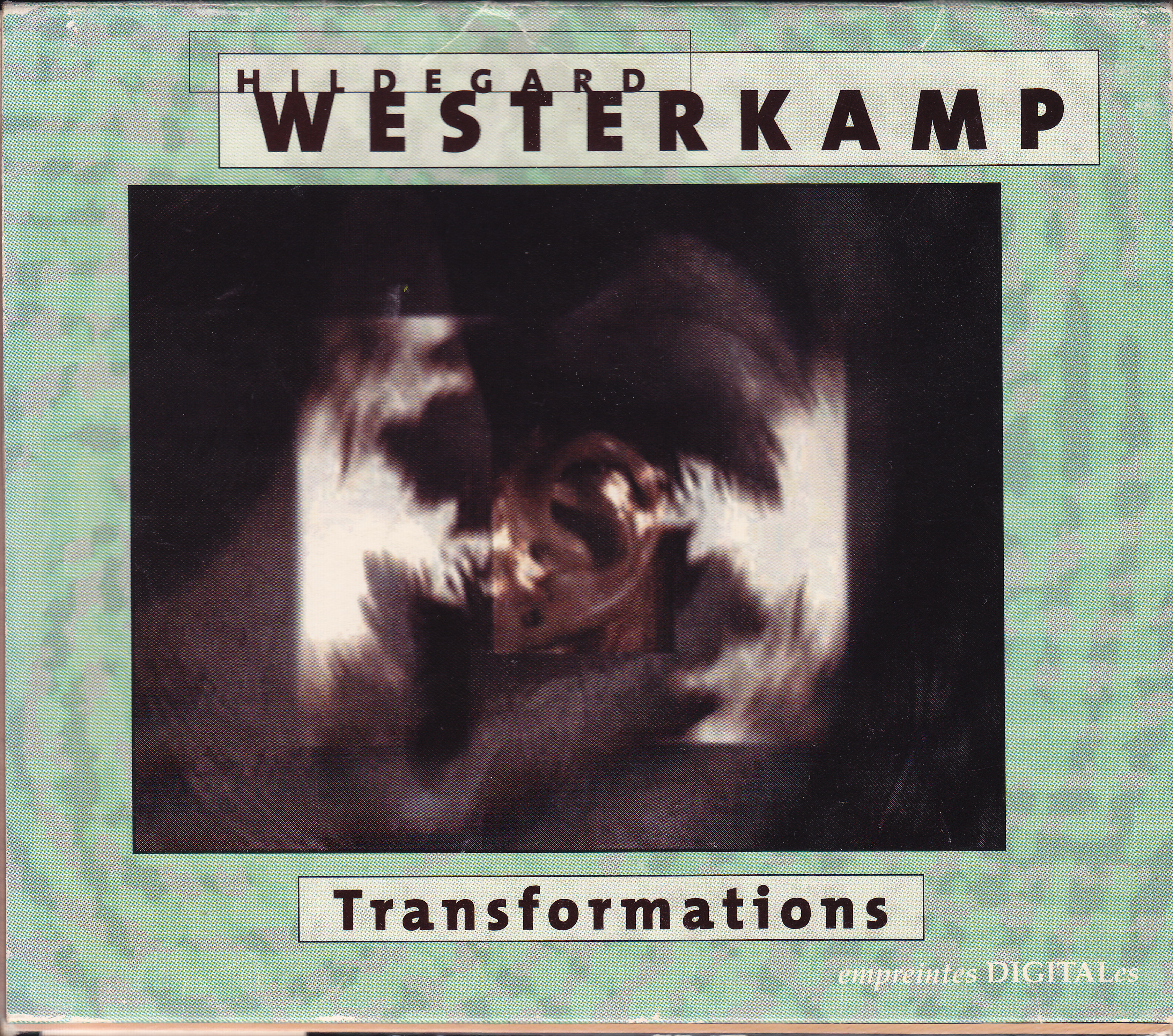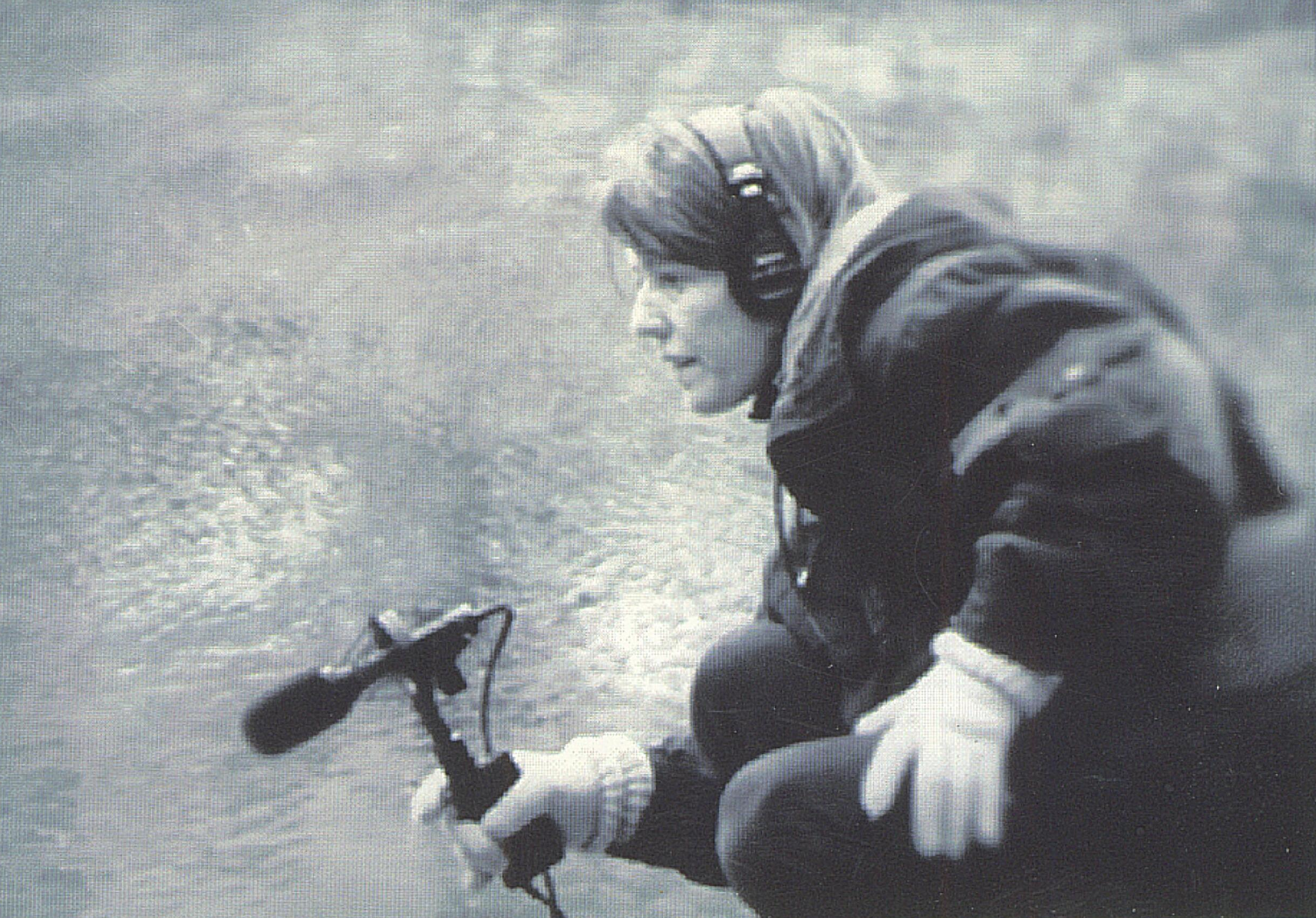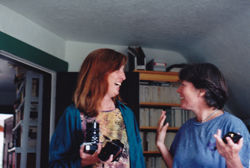[CD]
Hildegard Westerkamp — Transformations (1996)
Hildegard Westerkamp — Transformations
empreintes DIGITALes [IMED 9631], 1996
Hildegard Westerkamp was born in Osnabrück (Germany) and emigrated to Canada in 1968. Whether as a composer, educator or radio artist, most of her work since the mid-1970s has centred around environmental sound and acoustic ecology. She was a member of the original World Soundscape Project, has taught courses in Acoustic Communication at Simon Fraser University (Vancouver) and has conducted soundscape workshops internationally. She is a founding member and is currently active on the board of the World Forum for Acoustic Ecology (WFAE). Between 1991 and 1995 she was the editor of The Soundscape Newsletter. By focusing the ears’ attention to details both familiar and foreign in the acoustic environment, Westerkamp’s compositional work draws attention to the inner, hidden spaces of the environment we inhabit. [1998]

Hildegard Westerkamp says: “I hear the soundscape as a language with which places and societies express themselves.” Her Transformations CD presents five of her soundscape compositions, reflecting work composed from 1979 to 1992, each sounding the depths of a different place, creating a different inner landscape each time I hear them. She works with the sonic and sociopolitical potentials of each place, recording, mixing and subtly transforming sounds to heighten listeners’ awareness and appreciation of these sites. She is a skilled and careful interpreter of their languages.
You Make It With the Skin of the Desert Night
Cricket Voice (1987) is a musical exploration of a solo cricket song, recorded by Westerkamp at night in a Mexican desert region called the Zone of Silence. The acoustic clarity of this place frames the cricket song, accompanied by sound-making with the spikes of cacti and other plants, and electroacoustic transformations of these sounds. This composition is as expansive as the desert, intimate as the voice of a single cricket.
Listen to Our Cities
Two of the works, A Walk Through the City (1981) and Kit’s Beach Soundwalk (1989), are both based on urban soundscapes. In the downtown core, I can become numb to the constant sounds. These works challenge me to listen, to transform, to make quiet places in the city. A Walk Through the City takes us through Vancouver’s Skid Row area, guided by Norbert Ruebsaat’s poem of the same name. Kit’s Beach Soundwalk begins at Kitsilano Beach, in the heart of Vancouver, yet at the same time a border. I hear the throb of the city balanced with the tiny sounds of barnacles feeding in the lapping tide. This piece explores many borders — between dream and waking, city and country, water and land, documentary and composition. When it enters the dreamworld of high frequencies, I remember where quiet places in the city can take me.
Soundmarks and Sitka
Fantasie for Horns II (1979) is the earliest piece in the collection, composed from the sounds of Canadian train horns, foghorns, factory and boat horns, with a live part for the French horn. Horns are especially evocative sound marks that give us a sense of place. Each time I hear this piece, I remember growing up by the sea and listening to the moan of the coastal foghorns, reminding me of the awe-inspiring power and energy of the sea.

The latest piece on the CD is Beneath the Forest Floor (1992). Most of the sounds for this piece were recorded by Westerkamp in the Carmanah Valley on Vancouver Island, and the piece evokes the stillness and peace of this old-growth rainforest, home to Sitka spruce and cedar trees over a thousand years old.
I have always found Hildegard Westerkamp’s work to be a particular source of insight and inspiration. It takes me to familiar and new places, encourages me to listen to the sounds around me, and to “transform through listening,” as Pauline Oliveros also notes about Westerkamp’s work. Her music urges me to listen to the language of the soundscape and to express my own relationship to it by working with soundscapes myself. I hope it does for you, too.
January 1998
Biography

Soundscape artist Andra McCartney (1955–2019) created multimedia works, audio postcards, radio art and works for dance. Born in Fleetwood, near Liverpool (United Kingdom), she lived in several other British ports before moving to Canada with her immediate family in 1968: her daughter was born in 1979, her son in 1980. She received a BA in Cultural Studies from Trent University (1983) and an MA in Adult Education from St. Francis Xavier University (1990) before completing her PhD in Music with a dissertation on the work of Hildegard Westerkamp at York University (1999). While living in Toronto, Andra co-hosted Auditory Transitory (CIUT Toronto 89.5), a weekly radio show devoted to soundscape composition and radio art. She lived in several parts of Ontario and northern Canada, moving to Montréal in 1999, where she taught Sound in Media for the Communication Studies department at Concordia University. McCartney has acted as a board member of the Canadian Electroacoustic Community (CEC) and the Canadian Association for Sound Ecology (CASE). [2022]
http://electrocd.com/en/artiste/mccartney_an
Social top